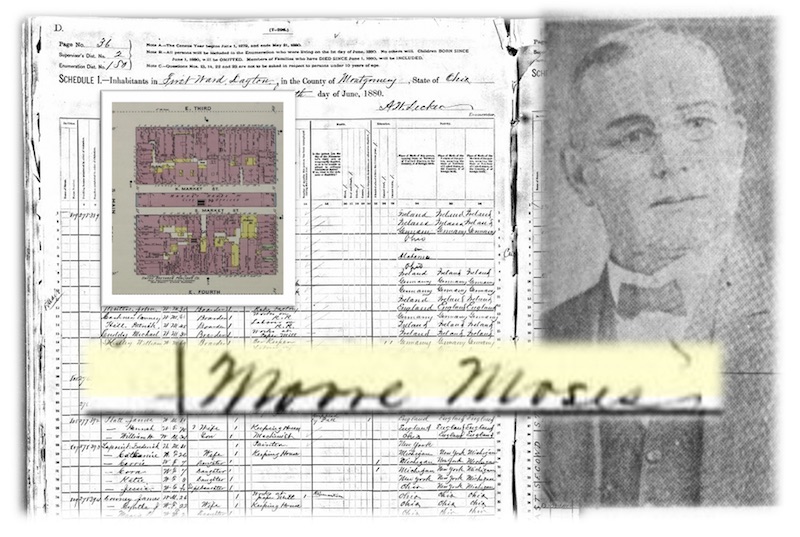University Libraries

Moses Moore: Political Action
By Heidi Gauder
Part 2 of 6 in a documentary biography of Moses Moore, who became known as the wealthiest Black man in Dayton in the late 1800s. Librarian Heidi Gauder pieced together his history from census records, maps, newspaper clippings and local histories. You can read the other installments on the Roesch Library blog:
- Moses Moore: A Documentary Biography
- Moses Moore: Business Grows
- Moses Moore: Entertainment and Sports
- Moses Moore: Building Portfolio
- Moses Moore: Community Needs
Although he never held public office, Moses Moore was involved in politics. He was a delegate to the Republican county convention in 1888. More significantly, in 1897, he was on the Negro Protective Party ticket for state treasurer. This party may have formed in response to the June 1897 lynching of an African American man, Charles “Click” Mitchell, in nearby Urbana. African Americans believed that the Republican governor, Asa Bushnell, had failed to conduct an appropriate investigation into the lynching. The platform declared, “The time having arrived when the best interests of the Negro race call for independent action upon his part, this convention presents the ticket nominated on the anniversary of the issuing of the proclamation of emancipation of Abraham Lincoln, and we hereby present the following declaration of principles, and have call upon every Negro to support our cause, and to vote our ticket.”
This platform was adopted in September, but by mid-October, Moore requested that his name be removed from the ticket. No reason was provided for his change of mind; perhaps it was for personal reasons or perhaps related to the party itself. Newspapers hinted that the Negro Protective Party was a ploy of the Democratic party in an effort to shift African American votes away from the Republican ticket. At this point in history, African Americans typically voted Republican, the party of Abraham Lincoln; this pattern changed in the mid-20th century with changes in party platform ideologies.
Moore was also well-known beyond Montgomery County. In 1904, he sought to be appointed as the administrator for the estate of Richard Dixon, an African American man who was lynched in nearby Springfield, Ohio. Dixon was accused of shooting a white policeman on March 6, 1904; a mob forcibly removed him from jail, lynched him and set fire to a neighborhood known for its black-owned saloons. The riot did not end until the governor sent in the National Guard. Dixon’s sisters sued the state to recover $5,000 in damages for Dixon’s estate, which Moore would have managed. However, because he did not reside in Clark County, his application was rejected.
— Heidi Gauder is a professor in the University Libraries and coordinator of research and instruction. In locating records and information about Moses Moore and his family, she received assistance from Suzanne Dungan, Paris-Bourbon County (Kentucky) Public Library; Shawna Woodard, Special Collections, Dayton Metro Library; and Amy Czubak, Montgomery County (Ohio) Records Center and Archives. View the sources used in this series.
